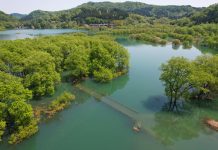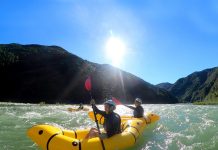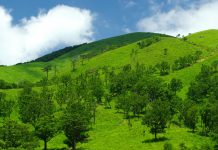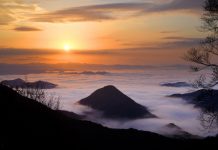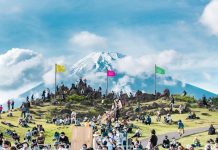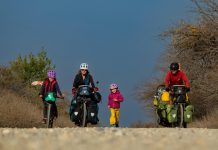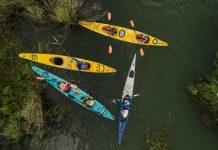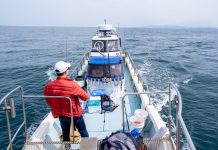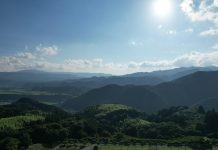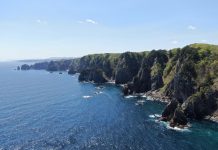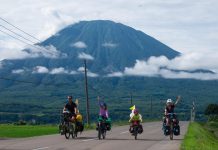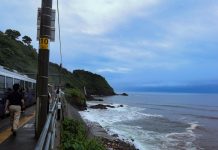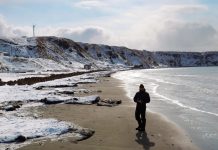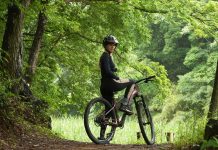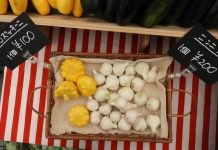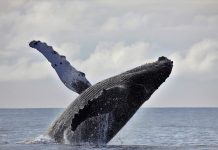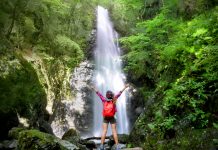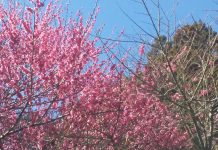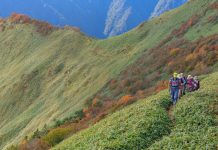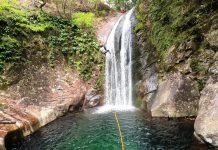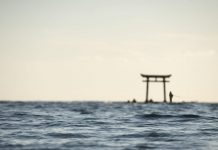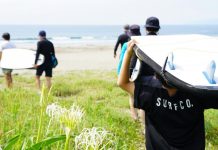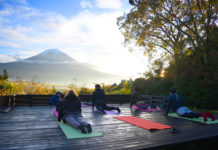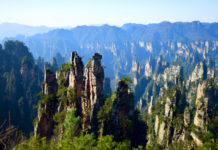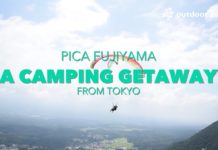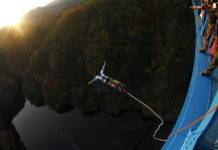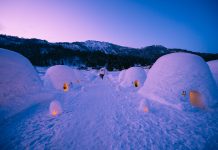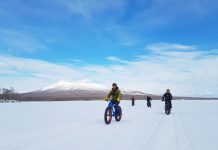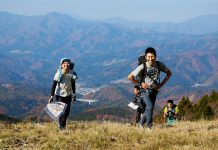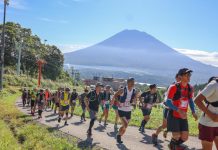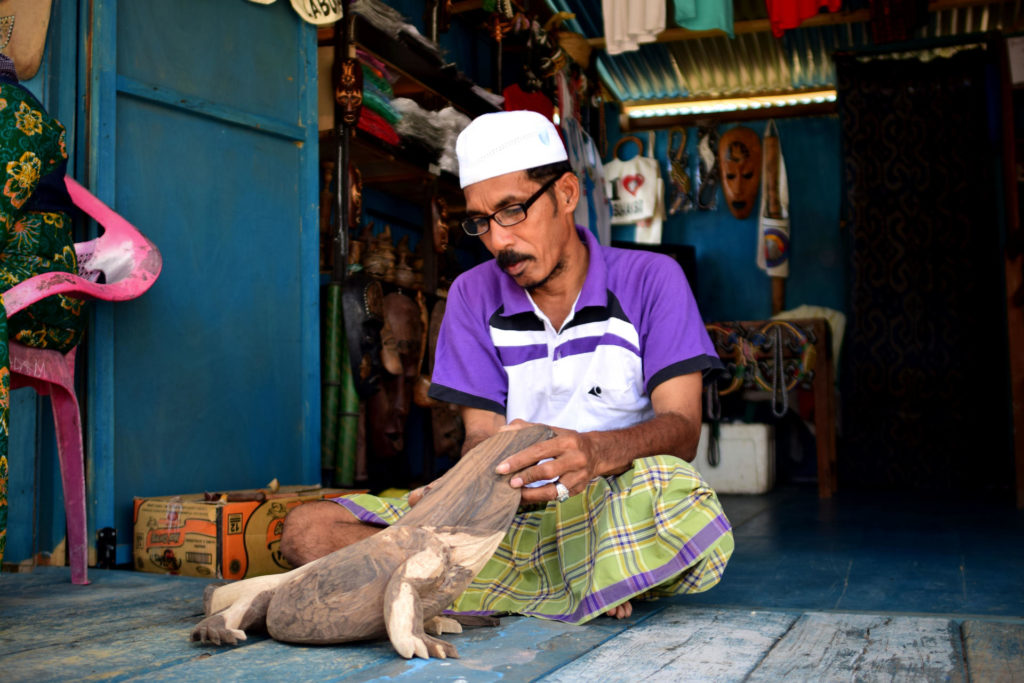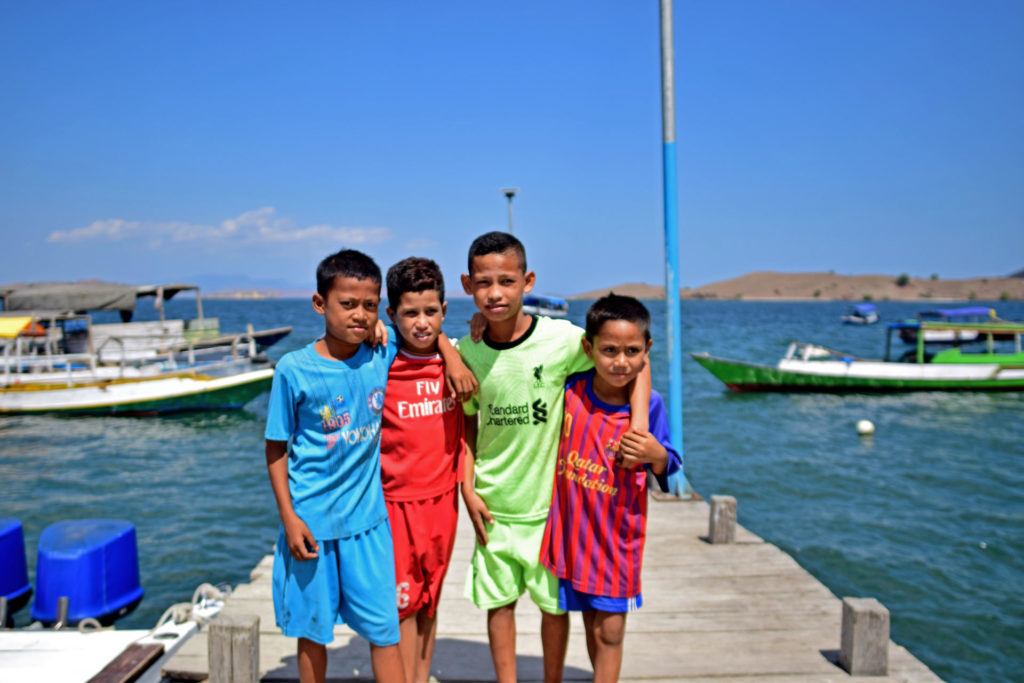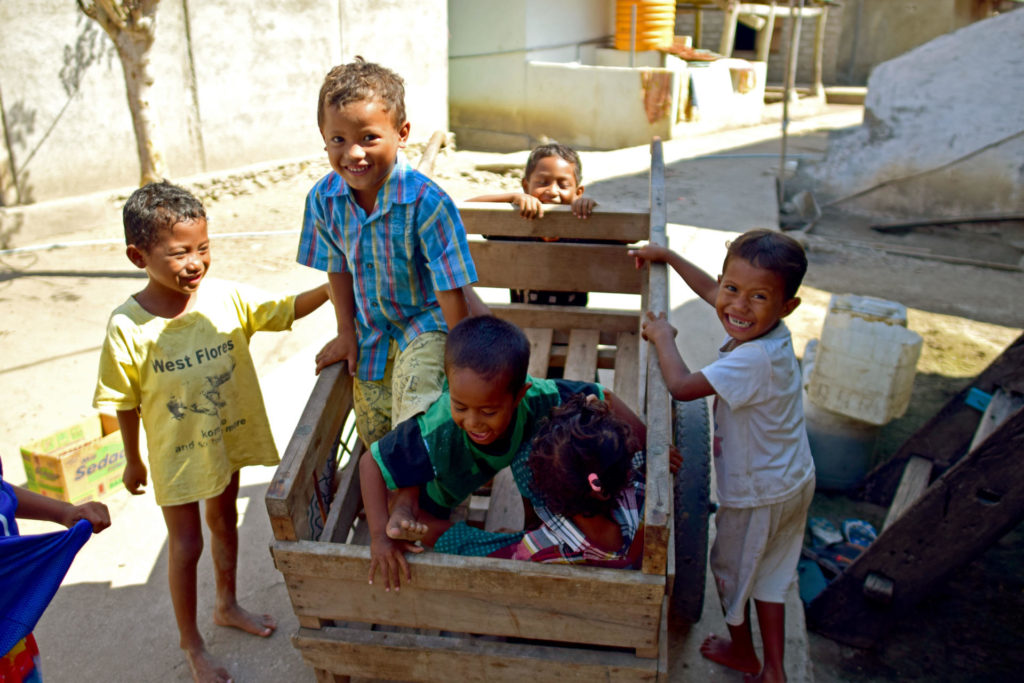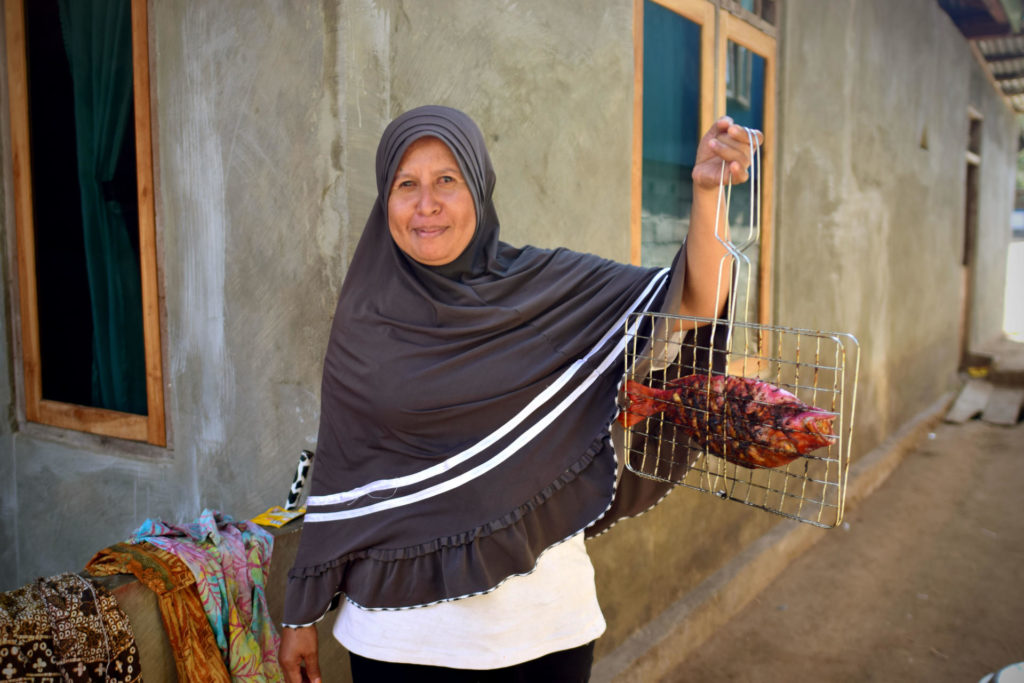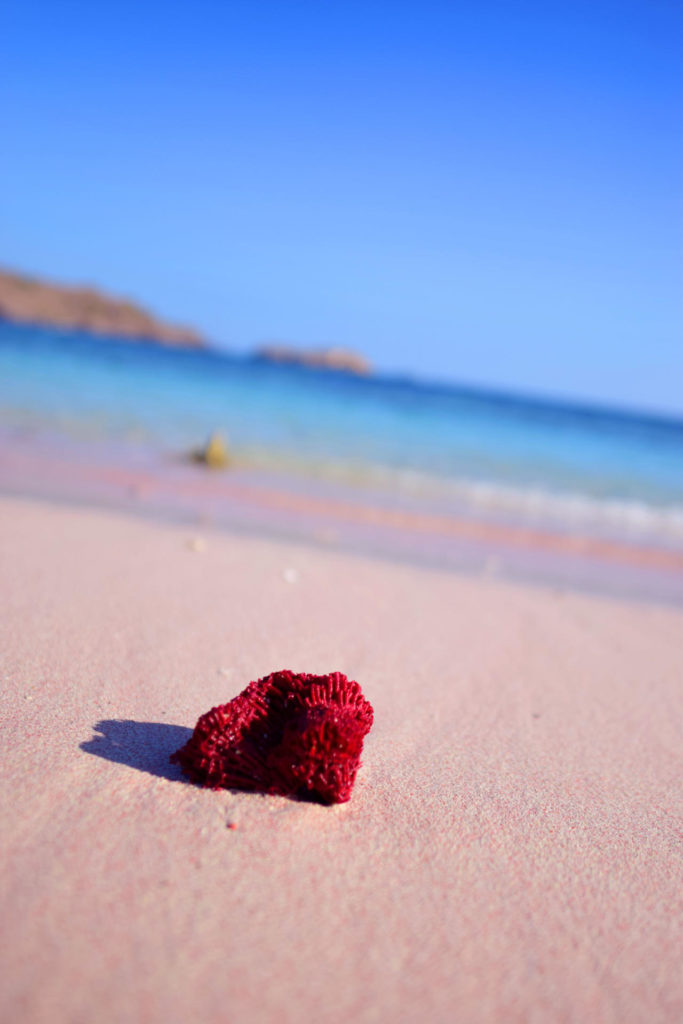The savannah of the dry, rugged islands before me looks bare and deserted, so it’s difficult to imagine that one of the world’s deadliest creatures lurks within.
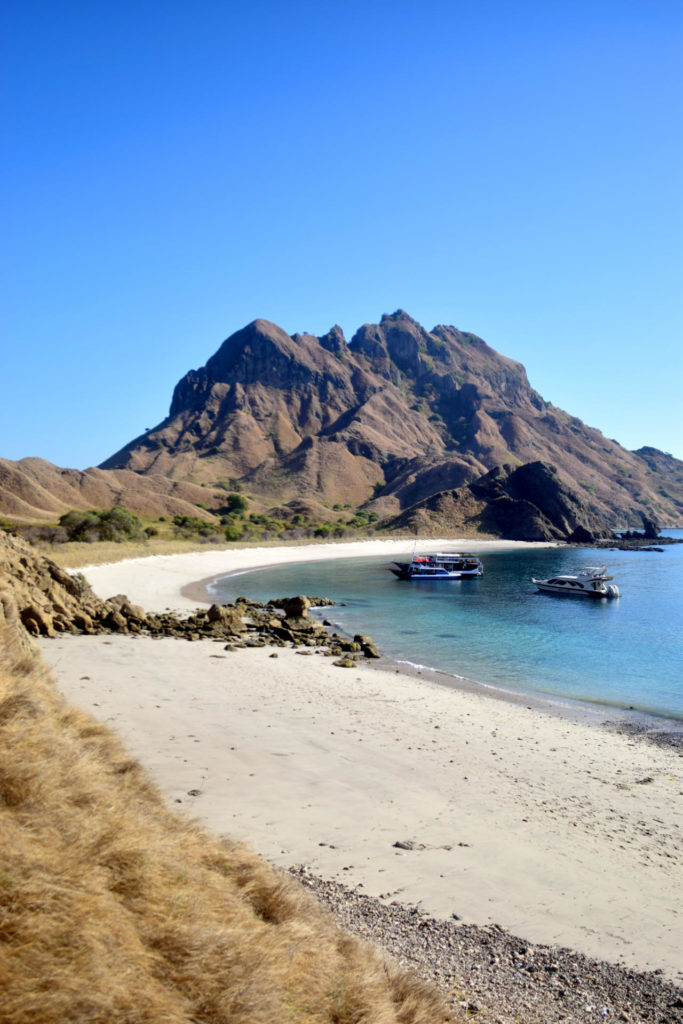
Curiously shaped islets haphazardly jut out of the glassy ocean, their coastline dotted sparsely with trees. Squint and they almost look like their most famous resident, the Komodo dragon.
Komodo National Park, located in Indonesia’s Lesser Sunda Islands chain, was established in 1980 and became a World Heritage Site in 1991, specifically to protect these giant lizards. The Komodo dragon is only found on the islands of Komodo, Rinca, Flores, Gili Motang and Gili Dasami islands, which were said to once be connected. Since they are endemic to these islands, the dragons are extremely vulnerable to extinction from loss of habitat or available prey. There are only 6,000 left today.
However, having recently become a major attraction for travelers, this mysterious species is being preserved by global conservation programs.
The Last Dinosaurs
A local ranger wielding a simple wooden stick greets me as I arrive at Loh Liang, the gateway for trekking on Komodo Island. Water buffalo, Sunda deer and wild boars are on the dragon’s menu, so I keep close to the experienced ranger on the trail. Staying in a group helps keep the dragons at bay and prevents unexpected surprises.
The IDR80,000 (¥800) entrance fee includes a choice of three guided trails: the Short Trek (1.5 km. / 45 minutes), the Medium Trek (2.5 km. / 90 minutes) and the Long Trek (4 km. / two hours). Each go past several dragon nests. Although the short trek overlooks the bay, the Medium and Long Treks give you a better chance of seeing dragons. The Adventure Trek at IDR500,000 (¥5,000) is about nine kilometers and summits the 538-meter Mt. Ara while passing a memorial for Baron Rudolf von Redding who ominously disappeared on the island in 1974—only his camera and glasses were found. Bearing this in mind, I embark on my own journey.
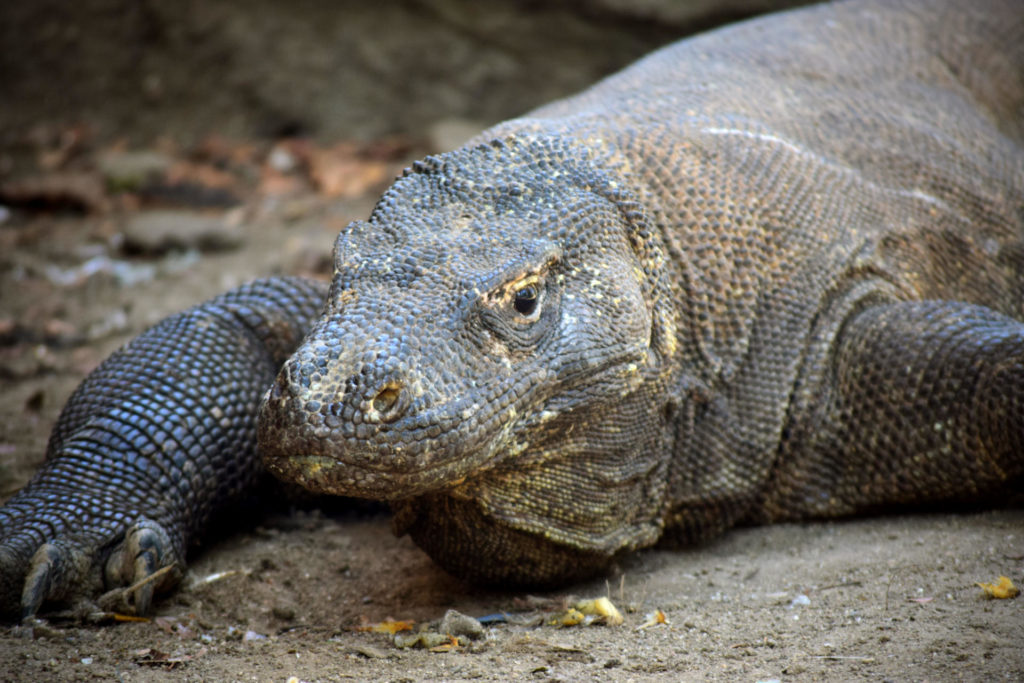
Less than 15 minutes into the trail, I encounter my first ora, the local name for the Komodo dragon. Venomous saliva dripping from its powerful jaws and a forked tongue darting in and out confirm this is no ordinary lizard.
Reaching up to three meters long and weighing an average of 70 kilograms, these stone-colored reptiles can run 18 kilometers an hour and swim from one island to another. They contain venom and at least 57 species of bacteria, making escape from them almost impossible.
Although their sense of sight and hearing is poor, they can pick up their prey’s scent from nine kilometers away using their tongues to taste the air. Once they have tracked down their prey, they chomp down with 60 serrated teeth—but it’s not their bite that kills. They inject venom and bacteria into their slowly dying meal, then return to finish feeding later. Dragons can consume up to 80% of their body weight in one feeding and once full, can go without food for a month. In the absence of a male, female dragons can reproduce asexually. There are currently only 350 breeding females.
Along the trail, we see a dirt mound, an impressive team effort built by a flock of orange-footed scrub fowl. Similar to a timeshare, the fowls use the nest in May while the dragons take over and lay eggs between September to November. The babies are born during the monsoon season in February and March, immediately fleeing to the trees for the first two years of their life to avoid being eaten by their cannibalistic peers including their own mothers.
Macabre as they are, the ancient creature is mesmerizing, a living relic of prehistoric times. Peak months for Komodo spotting are September to December. When visiting, respect their space, keep a safe distance and avoid sudden movements, remembering you are entering their territory.
Komodo Culture
According to “Ora and Gerong,” a folk tale from East Nusa Tenggara, a woman gave birth to twins—one a human—the other a baby lizard. The lizard, Ora, was eventually expelled by the villagers for his dangerous mannerisms and settled in the forest, but still visited his brother in the village every now and then. Today, an age-old symbiosis between dragon and man remains with the Komodo villagers respecting the original residents of the land.
The coastal village of Kampung Komodo lies west of Loh Liang and is made up of less than 600 villagers. The ethnic Bugis fishermen trace their origins to the Bajo—a tribe of “sea gypsies” from Makassar, Sulawesi located in the north.
The kampung’s most noticeable feature is the brightly colored houses on stilts, built to avoid their reptilian neighbors from breaking and entering. While the occasional lizard saunters through every now and then, there have only been two fatal accidents in the past decade. Overall, the Bugis believe the dragons have helped their economy by luring outsiders to their remote island. Aside from fishing, they make and sell woodcarvings of the lizards.
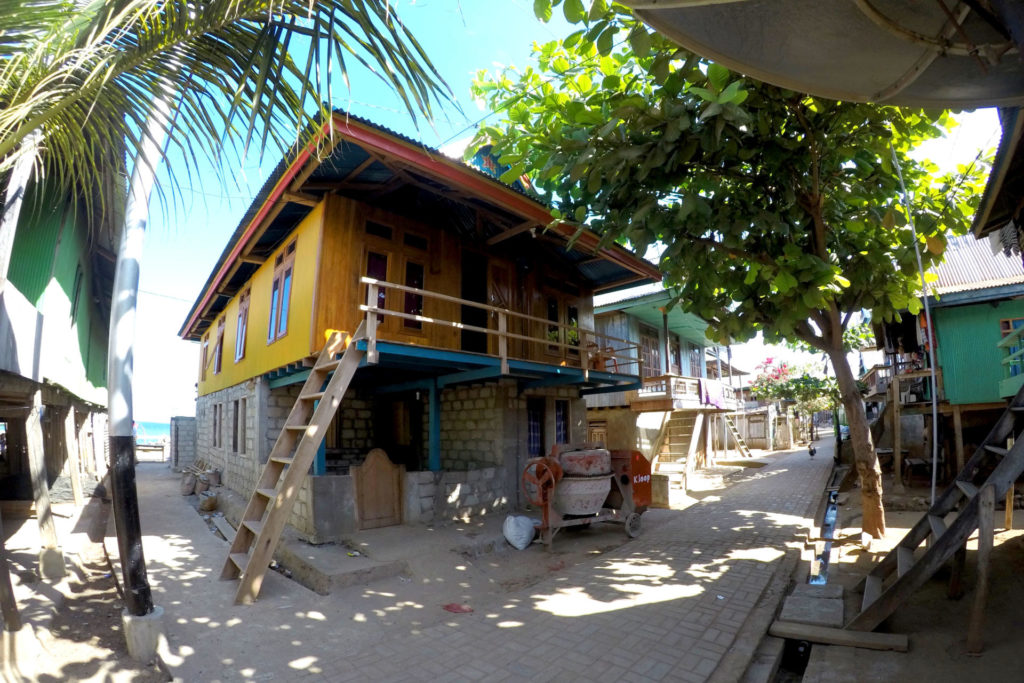
The Bugis also work at the park as rangers or members of the Komodo Survival Program, an Indonesian-based non-profit organization monitoring and researching the dragons’ conservation and habitat. Vil- lagers like 39-year-old Muhammad Sidic set up camera traps to track dragon activity and find ways to develop sustainable programs to help the region’s communities.
“When you grow up here, you get used to it,” he says. “Of course we tell our children to be careful of them, but we’re born knowing the Komodo dragons are part of our lives.”
Komodo’s culinary staples are grilled fish, curry, chicken, sambal (chili sauce) and tropical fruits including fresh kelapa (coconut), jackfruit, mangoes and pisa goreng (fried bananas). Being a 100% Muslim community, no pork is served, leaving plenty of wild boar for the hungry dragons.
Pretty in Pink
On the eastern tip of the bay is the aptly named Pink Beach, one of seven beaches of its kind on the planet. When the waves hit the shore, pulverized foraminifera (red coral), mixed with white sand, transform the shoreline into pastel blushes of pink. For this reason, the beach is also called Pantai Merah, translated as “Red Beach.”
After taking in the sites above water, I dip below to snorkel over coral cathedrals and among clownfish and angelfish. Part of the Coral Triangle, Komodo National Park is home to 260 coral species, 1,000 types of reef fishes, two species of sea turtles and manta rays and six species of sharks. With the shallow areas host- ing an abundance of species, Pink Beach is an ideal choice for beginner divers. Kayaking and stand-up paddling is also popular here as well.
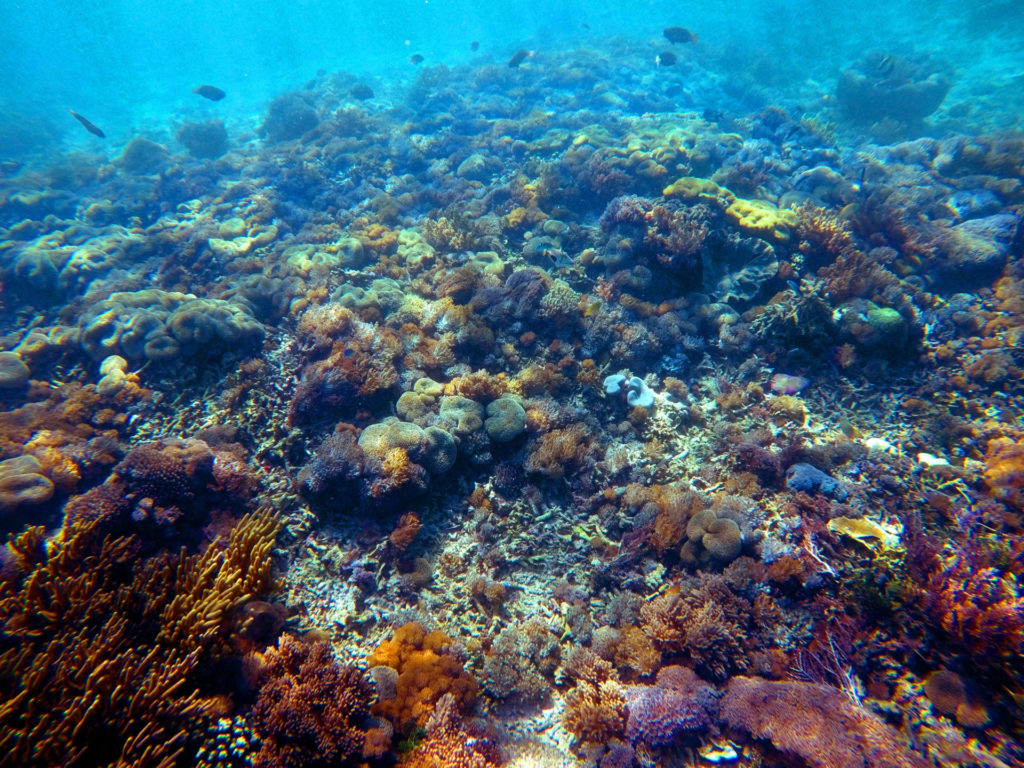
Another place to enjoy a pink shoreline without worrying about a possible dragon attack is the picturesque island of Padar. It was once home to three types of Komodo Dragons and is a 20-minute boat ride from Komodo Island while still part of the national park. Padar is surrounded by three turquoise bays, each boasting different colored sand: volcanic black, white and pink. The best way to view the island’s tri-colored beaches is an easy 30-minute hike up Padar’s summit, after which you can trek more, cool off in the waters or explore world-class diving spots.
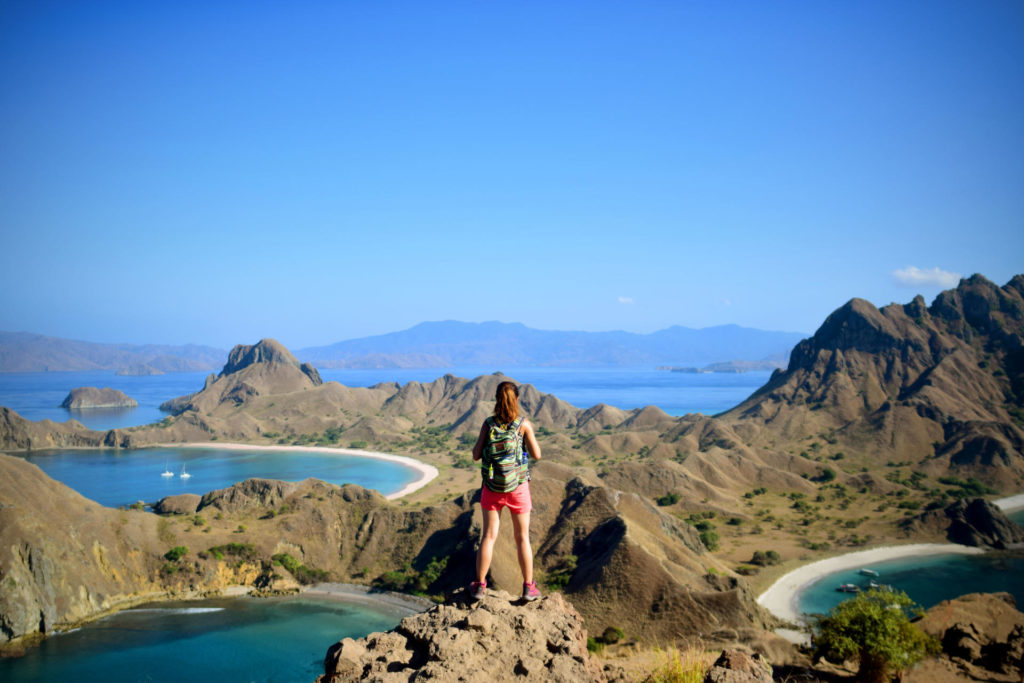
ESSENTIALS
The closest airport to Komodo National Park is Komodo Airport in Labuan Bajo on Flores Island in the East Nusa Tenggara Region. Komodo Airport is an hour-and-a-half flight from Denpasar, Bali with four to eight flights operated daily by Wings Air, Garuda Indonesia, Lion Air and NAM Air.
Komodo is an hour away from Labuan Bajo by speedboat. One-day or multiple-day trips from Labuan Bajo to Komodo National Park sell out quickly so book ahead with operators like Ora Dive and Visit Komodo Tours. Chartering your own speedboat for a day costs around ¥25,000 per person for groups of eight or more. Another popular option for divers is to stay on a liveaboard departing from Bali or Lombok. Many Indonesian pinisi—liveaboard boats made from teak wood—can be seen sailing the Komodo waters.
Komodo, Rinca and Padar are the three main islands of Komodo National Park and most tours stop at Padar and either Komodo or Rinca. You’ll find bigger dragons on Komodo while Rinca boasts a higher quantity. Be sure to bring lots of water as there are few stalls on the islands. For a truly authentic experience, homestay in a traditional stilt house with one of eight families signed up on Flores Homestay Network. It is around IDR110,000 per night (¥1,100) with breakfast included and electricity supply available from 6-11 p.m.

